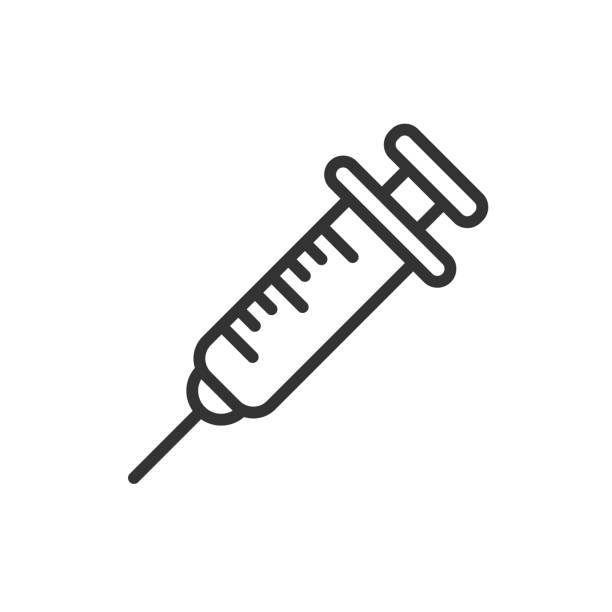Indications
Bevacizumab is indiated for-
- Metastatic Colorectal Cancer (mCRC)
- Non-Squamous Non–Small Cell Lung Cancer (NSCLC)
- Glioblastoma
- Metastatic Renal Cell Carcinoma (mRCC)
- Persistent, Recurrent, or Metastatic Carcinoma of the Cervix
- Platinum-Resistant Recurrent Epithelial Ovarian, Fallopian Tube, or Primary Peritoneal Cancer
Pharmacology
Bevacizumab binds VEGF and prevents the interaction of VEGF to its receptors (Flt-1 and KDR) on the surface of endothelial cells. The interaction of VEGF with its receptors leads to endothelial cell proliferation and new blood vessel formation in in vitro models of angiogenesis. Administration of bevacizumab to xenotransplant models of colon cancer in nude (athymic) mice caused reduction of microvascular growth and inhibition of metastatic disease progression.
Dosage And Administration
Metastatic Colorectal Cancer (mCRC): The recommended doses are 5 mg/kg or 10 mg/kg every 2 weeks when used in combination with intravenous 5-FU-based chemotherapy.
- Administer 5 mg/kg when used in combination with bolus-IFL.
- Administer 10 mg/kg when used in combination with FOLFOX4.
- Administer 5 mg/kg every 2 weeks or 7.5 mg/kg every 3 weeks when used in combination with a fluoropyrimidine-irinotecan or fluoropyrimidine-oxaliplatin based chemotherapy regimen in patients who have progressed on a first-line Bevacizumab-containing regimen.
Non-Squamous Non-Small Cell Lung Cancer (NSCLC): The recommended dose is 15 mg/kg every 3 weeks in combination with carboplatin and paclitaxel.
Glioblastoma: The recommended dose is 10 mg/kg every 2 weeks.
Metastatic Renal Cell Carcinoma (mRCC): The recommended dose is 10 mg/kg every 2 weeks in combination with interferon alfa.
Cervical Cancer: The recommended dose of Bevacizumab is 15 mg/kg every 3 weeks as an intravenous infusion administered in combination with one of the following chemotherapy regimens: paclitaxel and cisplatin, or paclitaxel and topotecan.
Platinum-Resistant Recurrent Epithelial Ovarian, Fallopian Tube or Primary Peritoneal Cancer: The recommended dose is 10mg/ kg every 2 weeks in combination with one of the following intravenous chemotherapy regimens: paclitaxel, pegylated liposomal doxorubicin, or topotecan (weekly); or 15 mg/kg every 3 weeks in combination with topotecan (every 3 weeks).
Administration
Do not administer as an intravenous push or bolus. Administer only as an intravenous (IV) infusion. Do not initiate Bevacizumab until at least 28 days following major surgery. Administer Bevacizumab after the surgical incision has fully healed.
First infusion: Administer infusion over 90 minutes. Subsequent infusions: Administer second infusion over 60 minutes if first infusion is tolerated; administer all subsequent infusions over 30 minutes if infusion over 60 minutes is tolerated.
Interaction
A drug interaction study was performed in which irinotecan was administered as part of the FOLFIRI regimen with or without Bevacizumab. The results demonstrated no significant effect of Bevacizumab on the pharmacokinetics of irinotecan or its active metabolite SN38.
In a randomized study in 99 patients with NSCLC, based on limited data, there did not appear to be a difference in the mean exposure of either carboplatin or paclitaxel when each was administered alone or in combination with Bevacizumab. However, 3 of the 8 patients receiving Bevacizumab plus paclitaxel/carboplatin had substantially lower paclitaxel exposure after four cycles of treatment (at Day 63) than those at Day 0, while patients receiving paclitaxel/carboplatin without Bevacizumab had a greater paclitaxel exposure at Day 63 than at Day 0.
Contraindications
There are no contraindications listed in the manufacturer’s labeling.
Side Effects
dry mouth, cough, voice changes, loss of appetite, diarrhea, nausea, vomiting, constipation, loss of appetite, mouth sores, headache, back , pain, cold symptoms (stuffy nose, sneezing, sore throat), dry or watery eyes, dry or flaky skin, hair loss, changes in your sense of taste, jaw pain/swelling/numbness, loose teeth, or gum infection.
Pregnancy And Lactation
Pregnancy Category C. There are no adequate or well controlled studies of bevacizumab in pregnant women. It is not known whether Avastin is secreted in human milk.
Precautions And Warnings
Arterial Thromboembolic Events. Among patients receiving Bevacizumab in combination with chemotherapy, the risk of developing ATE during therapy was increased in patients with a history of arterial thromboembolism, diabetes, or age greater than 65
Overdose Effects
The highest dose tested in humans (20 mg/kg IV) was associated with headache in nine of 16 patients and with severe headache in three of 16 patients.
Therapeutic Class
Targeted Cancer Therapy
Use in special populations
The safety, effectiveness and pharmacokinetic profile of Bevacizumab in pediatric patients have not been established. In published literature reports, cases of non-mandibular osteonecrosis have been observed in patients under the age of 18 years who have received Bevacizumab. Bevacizumab is not approved for use in patients under the age of 18 years.
Antitumor activity was not observed among eight children with relapsed glioblastoma treated with Bevacizumab and irinotecan. There is insufficient information to determine the safety and efficacy of Bevacizumab in children with glioblastoma.
Storage Conditions
Bevacizumab vials are stable at 2 to 8° C. Bevacizumab vials should be protected from light. Do not freeze or shake. Diluted Bevacizumab solutions may be stored at 2 to 8° C for up to 8 hours. Store in the original carton until time of use. No incompatibilities between Bevacizumab and polyvinylchloride or polyolefin bags have been observed.
